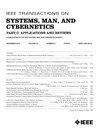下一代网络教育的关键问题
IEEE Transactions on Systems Man and Cybernetics Part C-Applications and Re
Pub Date : 2003-08-01
DOI:10.1109/TSMCC.2003.817361
引用次数: 87
摘要
本文对当前网络教育技术的局限性和不足进行了分析和分类,提出了克服这些局限性和不足的步骤,并提出了下一代网络教育系统的开发框架。它建议开发基于web的教育应用程序,使其具有更多面向理论和内容的智能,两个或多个教育应用程序之间更多的语义互操作,以及实现这种灵活性的现实技术支持。本文章由计算机程序翻译,如有差异,请以英文原文为准。
Key issues in next-generation Web-based education
This paper analyzes and categorizes limitations and weaknesses of current Web-based educational technology, suggests the steps to overcome them, and presents a framework for developing next-generation Web-based educational systems. It suggests developing Web-based educational applications with more theory- and content-oriented intelligence, more semantic interoperation between two or more educational applications, and realistic technological support to achieve such kinds of flexibility.
求助全文
通过发布文献求助,成功后即可免费获取论文全文。
去求助
来源期刊
自引率
0.00%
发文量
1
审稿时长
3 months

 求助内容:
求助内容: 应助结果提醒方式:
应助结果提醒方式:


